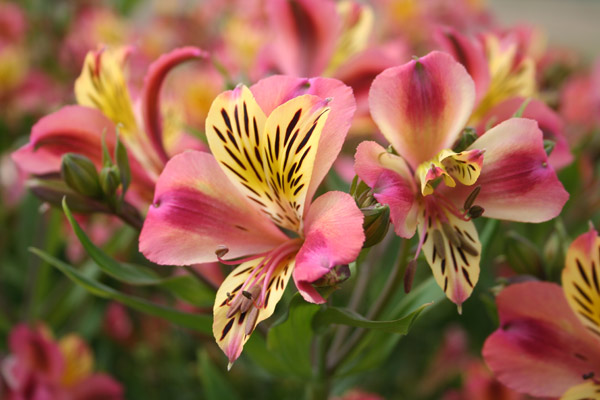The Beauty Of Wild Orchids: Which Varieties Of Alstroemeria Succeed In The Garden

If you are longing for novelties in the garden, try the Peruvian lilies i.e. alstroemeria So far, the admirers of this Chilean beauty (this is a type of alstroemeria is suitable for growing even in cold areas) valued it only as a cut flower, but some varieties succeed as extravagant garden decoration.
The most resistant and the biggest wild varieties of alstroemeria are – Alstroemeria Aurea, as well as varieties of “Orange King”, “Venus”, “Mars” and “Saturn”.

For the underground shoots (rhizomes) of these perennials to get strong, they will have no problem to overwinter in the garden, however they need loose and permeable soil. The plant is planted at a depth of 20 centimeters and during the cold months is covered with a thick layer of leaves to protect from frost.
The best dates for planting wild orchids is early spring or late summer. Some varieties (Ligtu Hybrids), which are a mixture of different colors can even be sown. The best period for planting seeds in a container is February, and for direct sowing in the garden – in May.
Tip: in the areas with strong winter it is best to plant the wild orchid in a pot that you can bury in the garden. During the winter, the flowerpot is removed from the soil and put in a cool place where there is no frost.
The beauty of wild orchids deserves our work and effort around its care. During the first two years of this plant, it will already delight their owners with its magnificent individual flowers on a stalk that reaches height of 50-100 cm. And then, in the third year of this South American beauty it will be moving in the attack. From June to August lots of flowers will appears again and again.
With varieties like “Venus”, “Mars” and “Saturn” the flowering period lasts even until autumn. When you find the suitable habitat for her, and when she adapts, in this place the wild orchid will remain for many years, to multiply and flourish. If the plant occupies much of the garden plot, you can remove redundant rhizomes with a small shovel.


